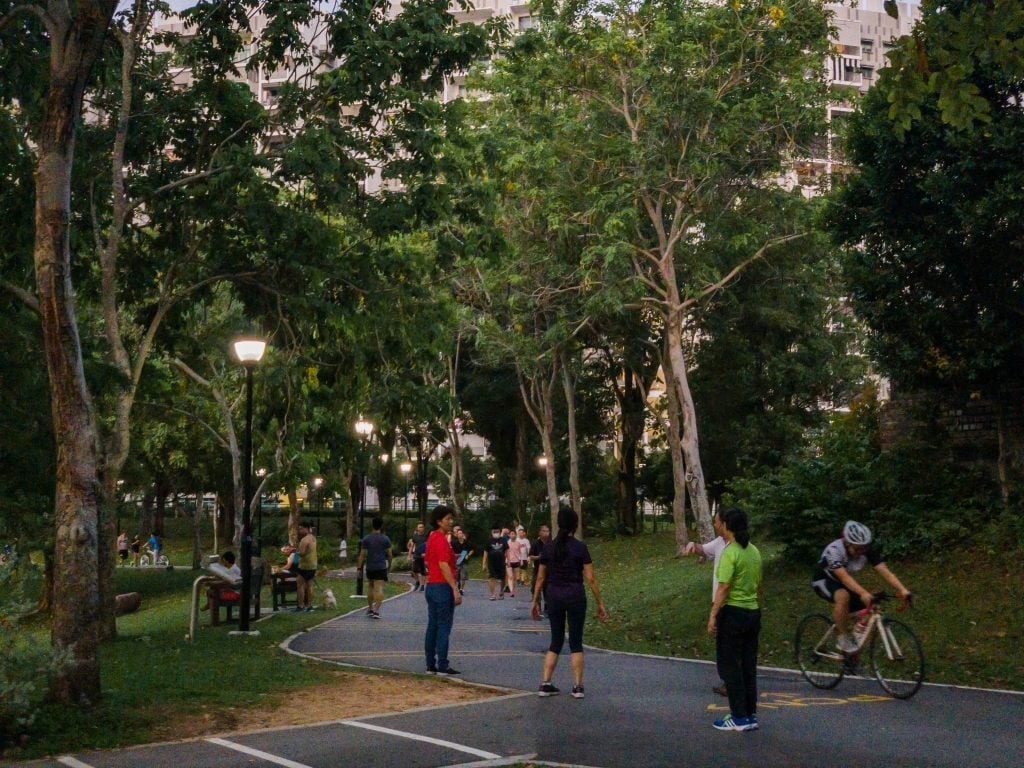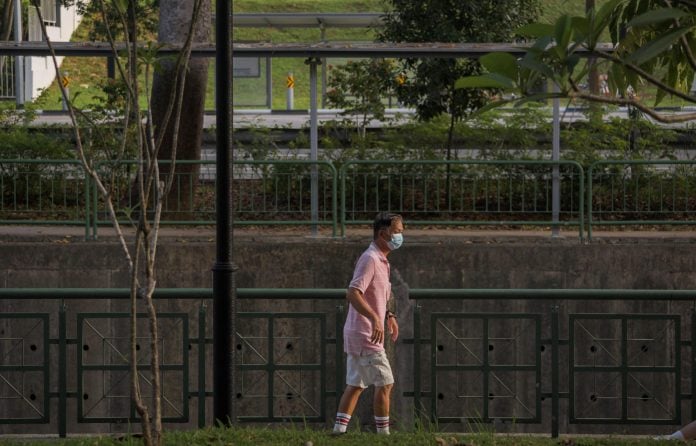HAVING worked from home since late last year, I decided to schedule my running sessions to the early morning instead of noon or evening some months back.
I wasn’t a fan of dragging the body along in a groggy state. But once I settled into the routine, it becomes a priority at the start of the day to quickly fulfil that one hour-plus of cardio exertion. With the heart energised post-run, I feel ready to engage the tasks at hand, being unbothered the rest of the day by the demands of committing to my daily 10K.
That was how things were before April this year. Even now, little has changed in terms of my routine. The goal of completing 60km-per-week is maintained and most sessions can be easily conducted with several loops around my neighbourhood.
Then, the COVID-19 outbreak struck the world hard at the start of the year and just about anything is now affected. Travelling out of the country is heavily restricted; people need to move one meter apart from each other to prevent close-contact infections; and several public venues, including gyms and stadiums, have closed temporarily.
For runners, forget about participating in races at least in the first half of 2020 as these events are either postponed or cancelled.
Currently, unless you are leaving home to do something essential — i.e. buying groceries and food takeaways; exercising at a public park or seeing a doctor for a suspected COVID-19 infection — you are strongly encouraged by the authorities to stay at home. Schools have moved to home-based learning for students and employees of many workplaces are operating remotely from home.
What do all these mean for us regular runners who prefer to sweat it out in the morning?
Well, due to a shift to a more flexible work arrangement, anyone who also thinks he/she could sneak in a sesh before 9 am is now running along the PCN – that fairly quiet stretch of tarmac beginning to receive a gradual rise of foot traffic.
As Minister for National Development Lawrence Wong warned about people seeking to drive and “make a special trip” to “a special place outside” your neighbourhood “just to exercise”, expect to go the furthest to the nearby park or park connector located a stone’s throw away.
Making adjustments
Until the past weeks or so, keeping a one-meter separation from another person as I ran past at the PCN wasn’t a big problem. There weren’t many people in the mornings of the earlier weeks and most were folks I have seen almost daily, whether it is the lady walking her two Shih Tzus or the old man taking a stroll with his portable radio playing.
When the Circuit Breaker measures kicked in early April, the number of visitors to the PCNs and parks noticeably increased and so are the sight of unfamiliar faces. In addition to the multiple runners I have to avoid moving too close to, I also contend with people moving in pairs or a bigger group, which sometimes takes up about half of the path.
As Minister Wong warned about people making “a special trip” to “a special place… just to exercise,” expect to go the furthest to the park or park connector located a stone’s throw away.
Under still-normal circumstances during the initial phase of local COVID-19 transmissions, keeping a wider width between you and the other individual at the PCN is simple – all you need to do is to run more to the side of the pathway.
However, we are now coping with a new normal, and as such, many people are not used to being very cautious in these extraordinary times. Anecdotally speaking, I have lost count the moments I veered to the grass patch on the side because somebody was moving a little too close.
Regular runners like ourselves will have to put in the effort to ensure personal safety so that we can go home with peace of mind, confident that we are not potentially bringing in an invisible threat to our house.
The first thing is to accept the current reality as it is that has already changed the way we go about with our business.
So, to start with:
1. Run solo but stay connected
With the latest COVID-19 Bill in place, social gatherings of any size are not allowed at both private and public spaces.
It’s goodbye to those weekends of getting out with your running buddies for now. But running alone does not mean the experience cannot be shared, especially when it can be done digitally or online.
Start a runner’s leaderboard of sorts in a Facebook or Whatsapp group with like-minded friends. Set a goal and reward; say, whoever accumulates the most mileage for the month gets a food treat cash-pooled by the group and sent via delivery services like GrabFood or Deliveroo.
Join Strava if you have not already registered. Sign on and complete the various community sport and fitness challenges. Push yourself to be the fastest on a nearby route that has a leaderboard of resident runners.
Despite the restrictive circumstances of social distancing, keeping in touch with each other is the biggest advantage of an online community of any kind.
running alone does not mean the experience cannot be shared, especially when it can be done digitally or online.
2. Outrun anyone who is not a friend – or someone you do not intend to meet
At some point, you are going to cross paths several times with a new person along your usual route. Or bump into a friend who is now exploring that part of your neighbourhood.
Nobody is meeting anyone who’s not part of his/her household (it is prohibited right now if you are not aware).
But with enough familiarity of their latest routine — where and when they would run — and some innocent and brief exchange of pleasantries at a safe distance, why not try to keep in pace with each other with increasing speed?
You can also try overtaking them if you are just starting from the back. And remember your polite “hellos” after sprinting past.
Again, be aware of your one-meter separation and watch out for other park/PCN users.
3. Run to the side of the pathway
From whichever direction you are running from, either stay to the extreme left or extreme right to allow more social distancing from other runners.
Shift sideways from time to time if a slow pedestrian is directly in front of you or when you are trying to avoid an oncoming cyclist. Run onto the grass patch if you encounter a person who couldn’t manage a simple act of social distancing.
Be alert of your situation. There are going to be some folks who will walk in pairs or threes and take up about half of the pathway. Do your best to overtake at a safe distance or divert your route.
Do not run in the middle of the path due to the already restricted width. You are not going to get drafting advantages from that.
4. Unless very necessary, avoid public parks at all costs.
Let’s face it: with a nice mini-lake, pleasant greenery, amenities and the occasional appearance of otters, a public park is a magnet for folks from all walks of life, whether they are exercising or not.
Multiple paths will get clogged with enough foot traffic to render social distancing pointless in the peak hours. Unless you are prepared to brave the hot sun in the afternoon or risk encountering perverts in the late evening, you are better off staying away from parks until COVID-19 transmissions cease.

5. Don’t go to trails – simulate it.
The truth is not many of us live near enough to Bukit Timah Hill to make a one-minute trip to. And the authorities are quite clear about long-distance commute: only go out for essential purposes and stay home as much as possible (refer to Minister Wong’s earlier statement).
Furthermore, drones are already patrolling over BTH while some sections of nature reserves have been closed.
You can run on the uneven grass patch at the pavement’s side to get your trail fix, but that would be like telling an aspiring pro-driver to operate a Daytona arcade machine because he cannot afford a Toyota Supra GT4.
Thankfully, the toughness of BTH hill climbing can be simulated, even if not to perfection.
Simply, pick the highest HDB block in your estate and hike it up with a slew of repeats. Modify the difficulty by going slow at the first half, then speed it up for the last several floors. Skip two steps going up to intensify the climb. Carry a load of sorts — e.g. a hydration vest packed all your essentials at race-day weight — to enhance the workout. If this is likely to bore you fast, have your earphones tuned to your favourite podcasts and get educated as you toil.
Beware: You may want to avoid HDB blocks which you do not stay at due to the authorities’ actions against loitering. Additionally, you will not be the only one using the staircase and may need to be light-footed on the steps lest becoming a nuisance to your neighbours.
6. Enjoy the process. Really.
The Circuit Breaker period is expected to end on May 4 but that’s depending on what the COVID-19 situation in Singapore will be by then.
For now, it will be a few weeks of staying strictly at home. Most of the time.
With running, you can only go so far to tackling your cabin fever. It’s time to consider the various indoor activities and pastimes you have neglected since you entered the workforce.
Read that book you bought 10 years ago. Watch Youtube to receive free lessons on Python coding. Marie Kondo the heck out of your living spaces. Take up cooking and anticipate the horrified looks of family members sampling your meal.
Or you can just plot your training schedule and goals, scheming a plan to dominate leaderboards across the Strava platform.
Just remember that the period we are in now is temporary. Someday, things will return to normal; road races will happen once more and ultramarathoners will fly off to their next exotic destination in the mountains.
We will slap high-fives again, hugging at finish lines with sweaty arms wrapped around each other and celebrating achievements with such abandon of physical distancing – it’s as if the coronavirus no longer lurks in our midst.
Meanwhile, please stay safe.


